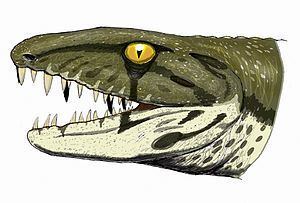Higher classification Amphibians | Scientific name Anthracosauria Rank Order | |
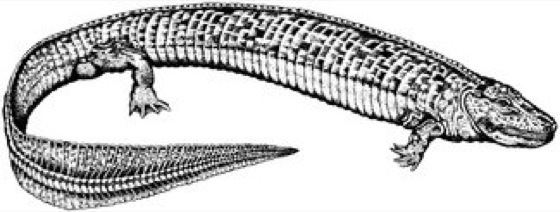 | ||
Clade AnthracosauriaSäve-Söderbergh, 1934 Similar Amphibians, Tetrapod, Reptiliomorpha, Embolomeri, Vertebrate | ||
Anthracosauria is an order of extinct reptile-like amphibians that flourished during the Carboniferous and early Permian periods, although precisely which species are included depends on one's definition of the taxon.
Contents
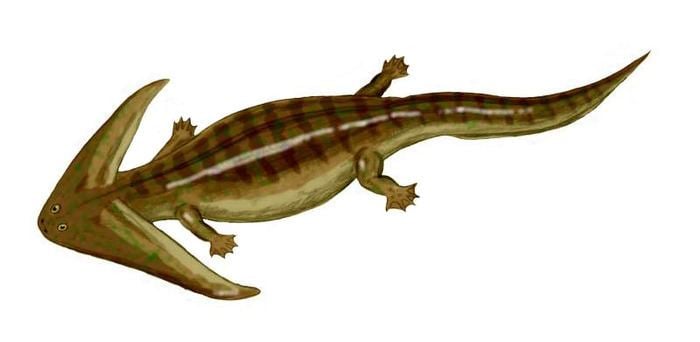
Various definitions
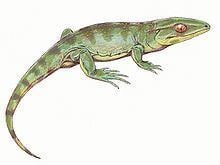
As originally defined by Säve-Söderbergh in 1934, the anthracosaurs are a group of usually large aquatic Amphibia from the Carboniferous and lower Permian. As defined by Alfred Sherwood Romer however, the anthracosaurs include all non-amniote "labyrinthodont" reptile-like amphibians, and Säve-Söderbergh's definition is more equivalent to Romer's suborder Embolomeri. This definition was also used by Edwin H. Colbert and Robert L. Carroll in their textbooks of Vertebrate Palaeontology (Colbert 1969, Carroll 1988). Dr A. L. Panchen however preferred Säve-Söderbergh's original definition of Antracosauria in his Handbuch der Paläoherpetologie, 1970.
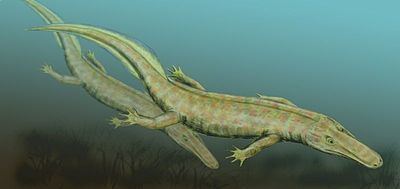
With cladistics things have changed again. Gauthier, Kluge and Rowe (1988) defined Anthracosauria as a clade including "Amniota plus all other tetrapods that are more closely related to amniotes than they are to amphibians" (Amphibia in turn was defined by these authors as a clade including Lissamphibia and those tetrapods that are more closely related to lissamphibians than they are to amniotes). Similarly, Michel Laurin (1996) uses the term in a cladistic sense to refer to only the most advanced reptile-like amphibians. Thus his definition include the (Diadectomorpha and Solenodonsauridae) and the amniotes. As Ruta, Coates and Quicke (2003) pointed out, this definition is problematic, because, depending on the exact phylogenetic position of Lissamphibia within Tetrapoda, using it might lead to the situation where some taxa traditionally classified as anthracosaurs, including even the genus Anthracosaurus itself, wouldn't belong to Anthracosauria. Laurin (2001) created a different phylogenetic definition of Anthracosauria, defining it as "the largest clade that includes Anthracosaurus russelli but not Ascaphus truei". However, Michael Benton (2000, 2004) makes the anthracosaurs a paraphyletic order within the superorder Reptiliomorpha, along with the orders Seymouriamorpha and Diadectomorpha, thus making the Anthracosaurians the "lower" reptile-like amphibians. In his definition, the group encompass the Embolomeri, Chroniosuchia and possibly the family Gephyrostegidae.
Etymology
The name "Anthracosauria" is Greek ('coal lizards'), because many of its fossils were found in the Coal Measures.
